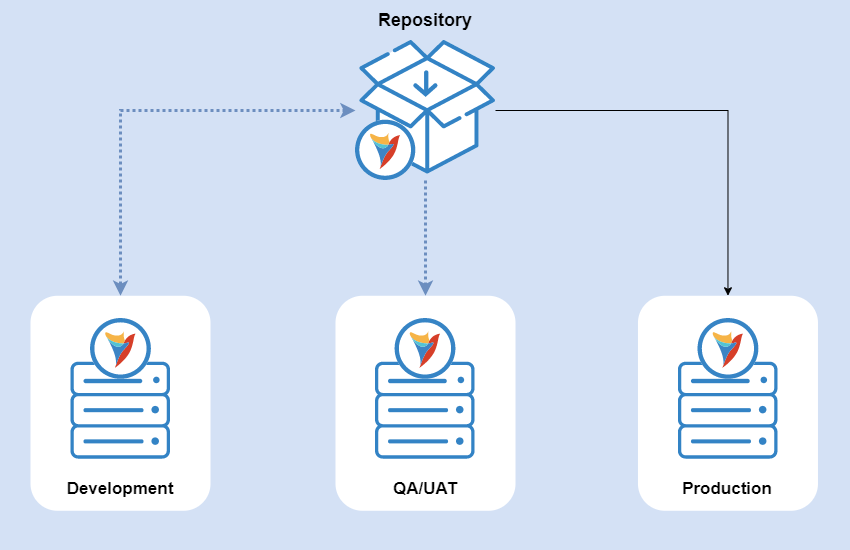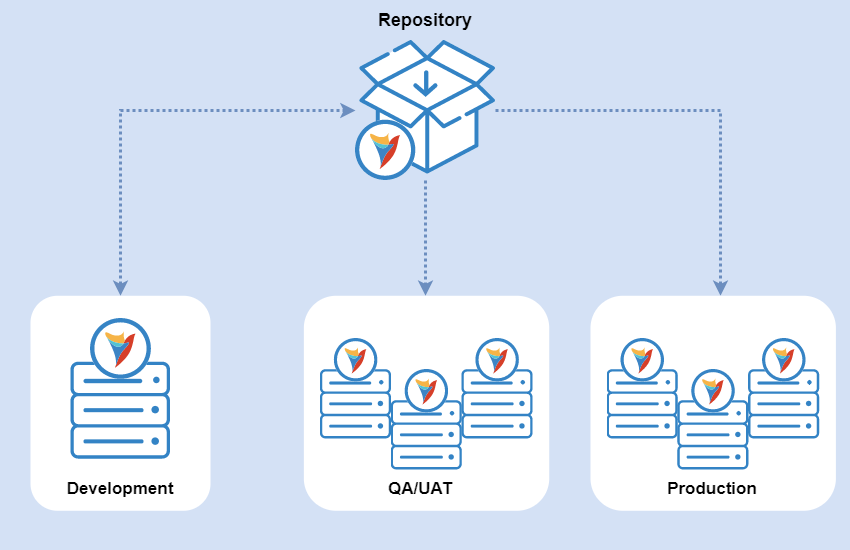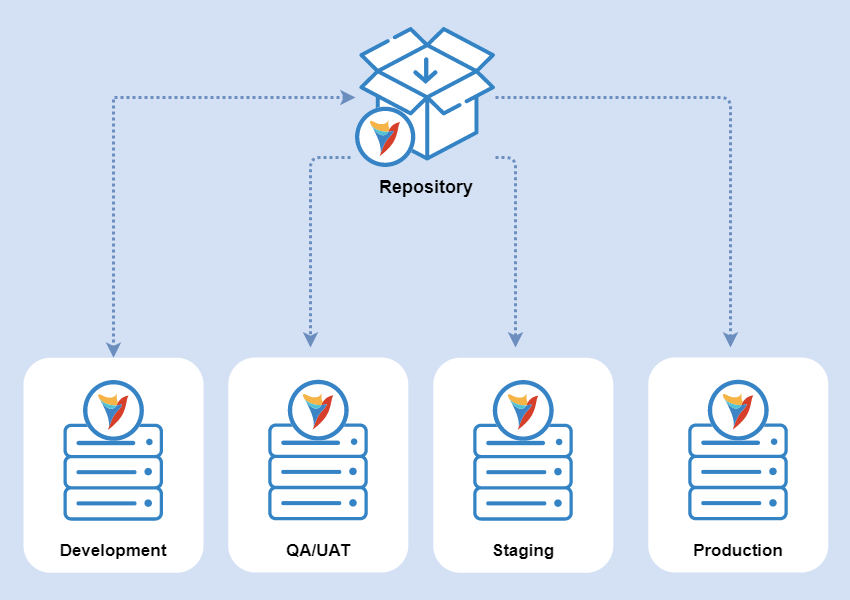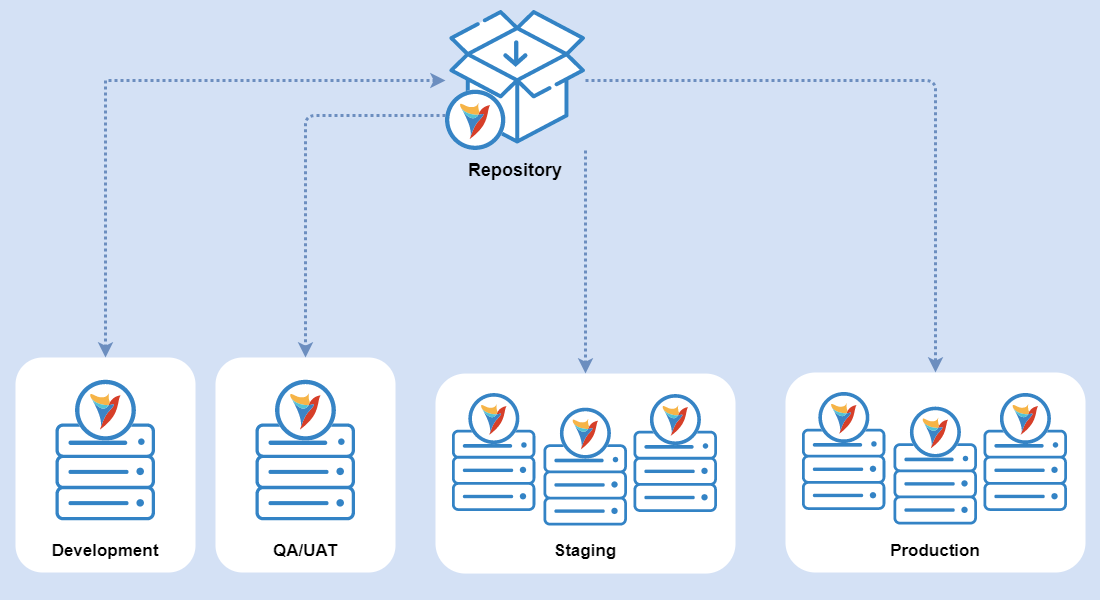Overview
The following document discusses and demonstrates the different patterns available to customers in terms of Deployment and Hosting a Project, as well as the various server types that are utilized to deploy and host these Projects.
Server Types
The following section provides definitions for the different types of Servers that can be used in a Decisions Deployment. Each one serves a specific purpose in the release of a product created via Decisions.
Development
A server used and designed to aid in the development of programs and applications.
Test
Server used to test out new implementations and features without affecting the primary environment, before release.
UAT (User Accepted Testing)
Used for End User testing to verify that the final product meets the expectations and needs of its end-user.
Staging
Used to test the product in a way that imitates its final production environment after development. Also provides temporary hosting for the product.
Repository
Used to store Project resources and for version control; can be used to Check In and Out resources to and from different Servers.
Production
Used to host the final product. Users may access the product, application, website, etc. from this point.
DR (Disaster Recovery)
Used as a backup in the event of errors, failures, and emergencies.
Deployment/Hosting Pattern Diagrams
The following section provides a diagram of each standard Deployment/Hosting pattern as well as a chart demonstrating each configuration's respective Server Footprint.
Standard Production
The Standard Production pattern represents the minimum Decisions footprint and only consists of a single Development Server and one Production Server.
| Server Type | Number of Servers |
|---|---|
| Non-Production | 1 |
| Repository | 0 |
| Production | 1 |
Development, Repository, Production
This pattern is similar to the Standard Production pattern in that it utilizes a single Non-Production Server as well as a solitary Production server. However, this pattern utilizes a Repository Server as a means of storage from which Project files can be added and removed from.
| Server Type | Number of Servers |
|---|---|
| Non-Production | 1 |
| Repository | 1 |
| Production | 1 |
Development, Repository, Testing, Production
This pattern introduces the use of a Testing Server as a way to test out new functions before release, without affecting the primary environment.
| Server Type | Number of Servers |
|---|---|
| Non-Production | 2 |
| Repository | 1 |
| Production | 1 |

Development, Repository, Testing Cluster, Production Cluster
Introduces the use of a Server Clusters to allow for the distribution of work across multiple Servers. Multiple Testing Servers offer more stable and thorough testing, and multiple Production Servers allow for a smoother product distribution/hosting.
| Server Type | Number of Servers |
|---|---|
| Non-Production | 3+ |
| Repository | 1 |
| Production | 2+ |

Development, Repository, Testing, Staging, Production
This deployment introduces the use of a Staging Server as a means of testing how the product will operate at the Production stage, without deploying it to the Production Server.
| Server Type | Number of Servers |
|---|---|
| Non-Production | 3 |
| Repository | 1 |
| Production | 1 |
Development, Repository, Testing, Staging Cluster, Production Cluster
By introducing Clusters to the Staging process, developers are able to distribute the load of the simulated hosting and additional testing across multiple Servers. Providing an equal number of Production Servers (in a Cluster) balances out the final Production Load.
| Server Type | Number of Servers |
|---|---|
| Non-Production | 4+ |
| Repository | 1 |
| Production | 2+ |



